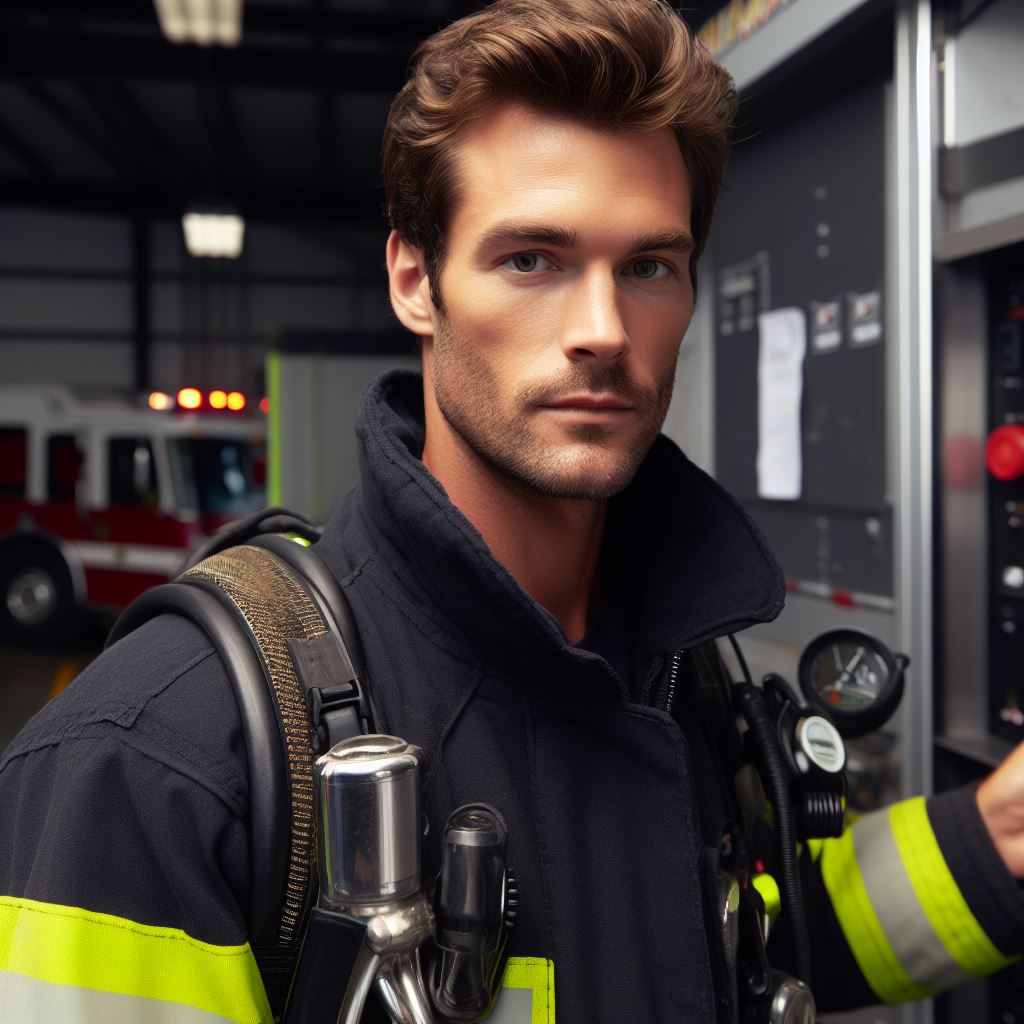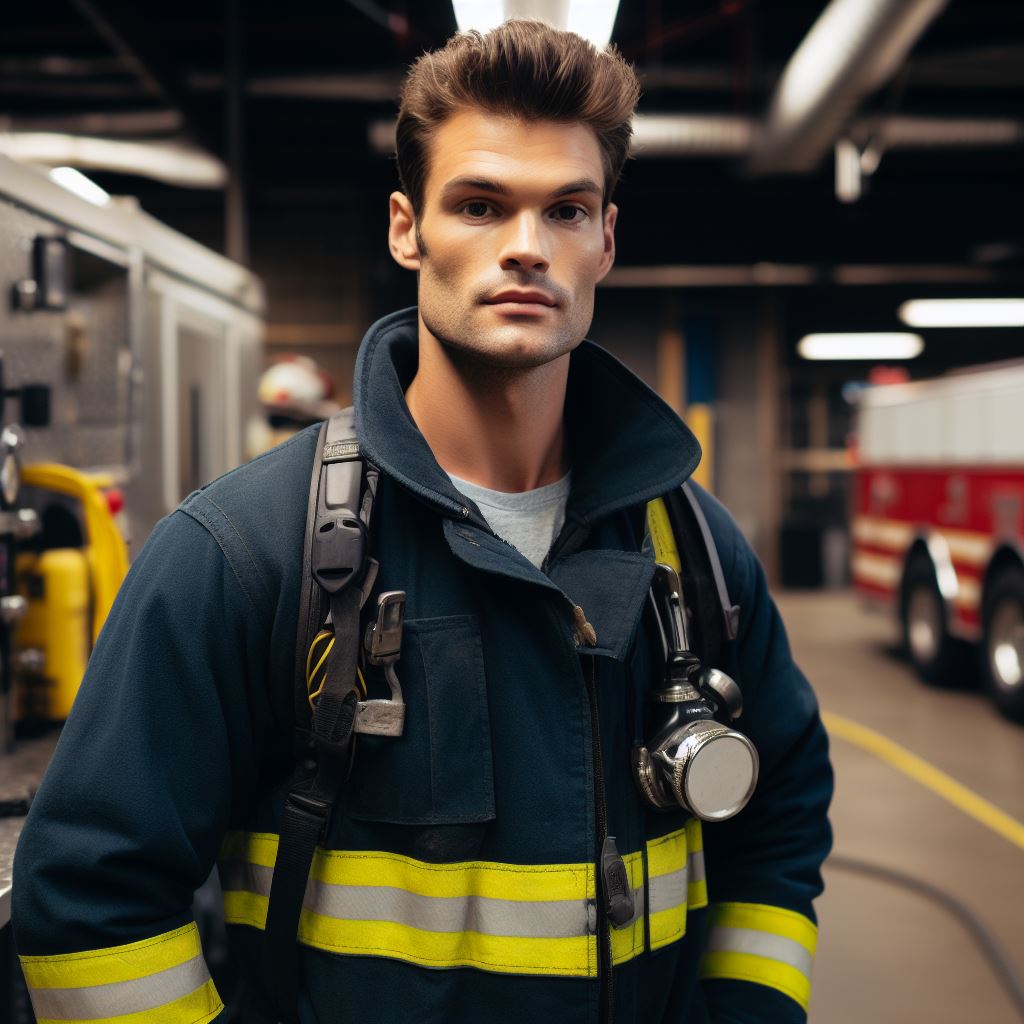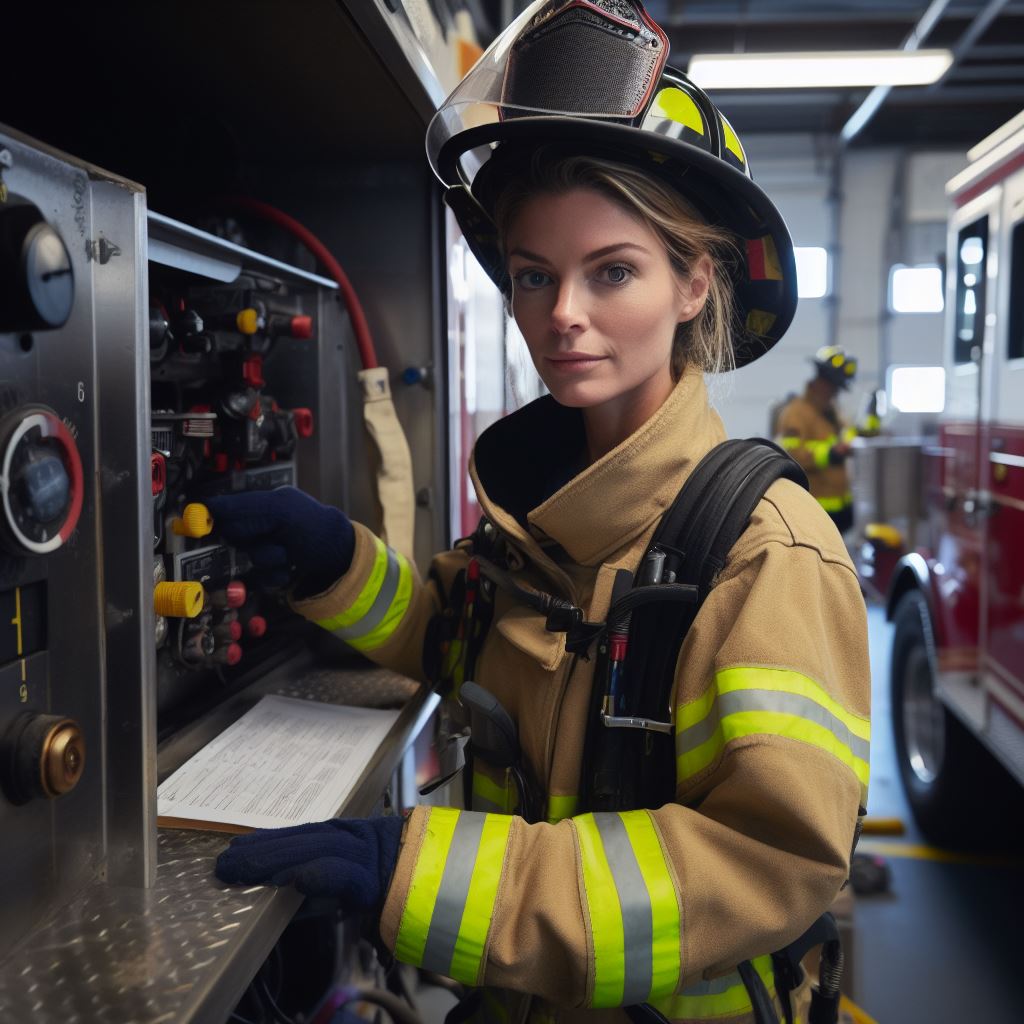Introduction
Firefighting is a crucial profession that saves lives and protects communities from devastating fires.
Firefighters play a vital role in ensuring the safety and well-being of the community they serve.
Firefighters are unsung heroes who risk their lives to save others and protect communities from the devastating effects of fires.
Becoming a firefighter is a challenging yet rewarding journey that requires dedication, physical fitness, and a passion for service.
In this blog section, we will explore the steps involved in becoming a firefighter in the United States.
Firefighters are instrumental in preventing fires, responding to emergencies, and providing assistance during natural disasters.
Their role goes beyond extinguishing fires; they also educate the community on fire safety and implement preventative measures to reduce the risk of fires.
Firefighters are highly trained professionals who possess the knowledge and skills necessary to handle various situations.
Without their expertise, countless lives and properties would be lost to fire-related incidents.
The importance of firefighters in the community
To embark on the journey of becoming a firefighter, individuals must meet certain requirements.
These requirements typically include being at least 18 years old, possessing a high school diploma or GED, and having a valid driver’s license.
Additionally, aspiring firefighters must undergo rigorous physical and written exams to assess their fitness level and knowledge of firefighting techniques.
Once candidates meet the initial requirements and pass the examinations, they can apply to fire departments for further evaluation.
The evaluation process often includes interviews, background checks, and medical examinations.
If successful, candidates will then attend a fire academy, where they receive extensive training in firefighting tactics, hazardous materials response, and emergency medical services.
Upon completion of the academy, individuals become certified firefighters and are ready to join their local fire department.
In addition, becoming a firefighter is a noble and challenging endeavor that requires dedication, physical fitness, and a commitment to serving the community.
Firefighters are essential in safeguarding lives and properties from the destructive power of fires.
By following the necessary steps and undergoing rigorous training, aspiring firefighters can embark on this rewarding journey of protecting and saving lives.
Qualifications and Requirements
Age and citizenship
To become a U.S. firefighter, there are several qualifications and requirements that must be met.
Firstly, applicants must be at least 18 years old, and they must also be U.S. citizens or legally authorized to work in the United States.
These requirements are in place to ensure that firefighters are committed to serving the country and its communities.
Educational requirements
In terms of educational qualifications, aspiring firefighters must have a high school diploma or equivalent.
While a college degree is not required, having additional education or certifications can give applicants a competitive edge.
Many fire departments also offer firefighter academies or training programs that provide the necessary education and practical skills required for the job.
Physical fitness requirements
Physical fitness is a crucial aspect of being a firefighter. To ensure that applicants are physically capable of performing the demanding tasks of the job, fire departments have specific fitness requirements.
This includes passing a physical agility test, which typically involves tasks such as climbing stairs, carrying equipment, and dragging hoses.
Additionally, applicants may be required to undergo a medical examination to ensure they are in good health and able to handle the physical demands of the job.
Other necessary certifications or licenses
Apart from age, citizenship, education, and physical fitness, there are additional certifications and licenses that may be required to become a firefighter.
These requirements can vary depending on the state or city in which an individual is applying.
Common certifications include Emergency Medical Technician (EMT) or a Paramedic license, Hazardous Materials Operations certification, and a valid driver’s license.
Firefighters must often respond to medical emergencies, so having EMT or Paramedic qualifications is highly beneficial.
The Hazardous Materials Operations certification is important for handling incidents involving hazardous substances.
Additionally, a valid driver’s license is necessary as firefighters may need to operate emergency vehicles.
In review, becoming a U.S. firefighter requires meeting several qualifications and requirements.
These include being of a certain age and having U.S. citizenship or work authorization. Educational qualifications include a high school diploma, and additional certifications or degrees can be advantageous.
Physical fitness is crucial, as demonstrated through passing a physical agility test and medical examination. Lastly, there may be other necessary certifications or licenses depending on the jurisdiction.
Meeting these requirements ensures that firefighters are prepared to serve and protect their communities effectively.
Research and Self-Assessment
Achieving your dream of becoming a U.S. firefighter requires thorough research and self-assessment. Here are the essential steps to follow:
Understanding the role and responsibilities of firefighters
Start by gaining a comprehensive understanding of what it means to be a firefighter. Learn about their crucial role in society and the responsibilities they undertake.
- Firefighters are highly trained professionals dedicated to responding to emergency situations, primarily fires.
- They are responsible for saving lives, protecting property, and ensuring public safety.
- Firefighters often work in high-stress environments, requiring them to remain calm and think quickly under pressure.
- They may also need to provide medical assistance, perform rescues, and educate the community regarding fire prevention.
Assessing personal interest and suitability for the profession
- Once you understand the role, it’s crucial to assess your personal interest and suitability for a career as a firefighter.
- Reflect on your passion for serving others and helping those in need during critical situations.
- Consider your physical fitness level and ability to endure strenuous tasks, as firefighting can be physically demanding.
- Evaluate your emotional resilience and ability to handle traumatic or stressful situations effectively.
- Assess your problem-solving skills and ability to make quick decisions, as firefighters often face rapidly changing circumstances.
Gathering information about the firefighter training process
- Now that you’ve assessed your suitability, it’s time to gather necessary information about the firefighter training process.
- Research the requirements and qualifications necessary to become a firefighter, which may vary across different states and departments.
- Contact local fire departments and inquire about their specific training programs and application procedures.
- Investigate the physical fitness standards expected during the training process and work on developing necessary skills.
- Seek guidance from experienced firefighters or attend informational sessions to gain insights into the profession.
Remember, becoming a firefighter requires dedication, hard work, and a genuine passion for making a positive difference in people’s lives.
Take the time to thoroughly research and assess your suitability for this noble profession before proceeding to the next step.
Education and Training
Pursuing a high school diploma or GED
To become a firefighter in the United States, one of the first steps is obtaining a high school diploma or a General Education Development (GED) certificate.
This educational foundation is essential for further training and career opportunities.
Firefighting requires individuals to have a basic understanding of academic subjects such as mathematics, science, and English.
These skills are necessary for reading and understanding fire codes, safety procedures, and written instructions.
Considering a degree in fire science or related field
While it is not mandatory to have a college degree to become a firefighter, pursuing higher education can provide significant advantages.
Many fire departments prefer candidates with a degree in fire science or a related field.
Transform Your Career Today
Unlock a personalized career strategy that drives real results. Get tailored advice and a roadmap designed just for you.
Start NowA degree in fire science equips aspiring firefighters with a comprehensive knowledge of fire behavior, prevention, and suppression techniques.
It also provides a deeper understanding of emergency management, hazardous materials handling, and building codes.
Moreover, a college degree demonstrates dedication, discipline, and the ability to learn complex concepts.
These qualities are highly valued in the firefighting profession, as firefighters often face challenging situations and are required to make quick and critical decisions.
Completion of a firefighter training academy
Attending a firefighter training academy is a crucial step in the journey to becoming a US firefighter.
These academies offer comprehensive educational programs and practical hands-on training to prepare candidates for the challenges they’ll face on the job.
In a firefighter training academy, individuals learn firefighting techniques, rescue operations, handling of specialized equipment, and emergency medical procedures.
They also acquire essential skills such as teamwork, leadership, and effective communication, which are vital during emergency situations.
Training academies often simulate real-life scenarios to provide practical experience and allow candidates to apply their knowledge under controlled conditions.
The training involves physical fitness assessments to ensure firefighters meet the demanding physical requirements of the job.
Ongoing professional development and continuing education
Becoming a firefighter marks the beginning of a lifelong journey of learning and professional development.
Once hired, firefighters undergo continuous training to enhance their skills and stay up-to-date with the latest firefighting techniques and safety protocols.
Fire departments provide regular in-service training and workshops to firefighters.
These sessions cover topics such as new equipment usage, advancements in fire suppression tactics, and updates in medical response techniques.
Additionally, firefighters are encouraged to pursue advanced certifications and specializations throughout their careers.
These certifications can include hazardous materials response, technical rescue operations, wildland firefighting, and others.
Achieving these certifications not only expands a firefighter’s knowledge and abilities but also opens up opportunities for career advancement and specialized roles within the department.
In general, education and training for firefighters encompass pursuing a high school diploma or GED, considering a degree in fire science or a related field, completing a firefighter training academy, and engaging in ongoing professional development.
These steps lay the foundation for a successful career in the challenging yet rewarding field of firefighting.
Read: Top U.S. Military Bases: Key Locations & Their Importance
Gaining Relevant Experience
Volunteering at local fire departments
- Volunteering at local fire departments is an excellent way to gain hands-on experience.
- By volunteering, you can observe and learn from experienced firefighters in real-life situations.
- Volunteering also allows you to contribute to your community and make a difference.
- You may be involved in tasks such as fire prevention education, equipment maintenance, or even responding to emergencies.
- This experience will strengthen your understanding of the demands and challenges of firefighting.
Joining community programs or organizations related to fire safety
- Joining community programs focused on fire safety will enhance your knowledge in this field.
- These programs provide valuable information, training, and resources to promote fire prevention.
- You can learn about fire safety techniques, hazard management, and emergency response strategies.
- Community organizations often hold workshops, seminars, and drills to educate and prepare the public.
- By participating in these programs, you can learn from experts and build connections within the firefighting community.
Seeking internships or part-time positions at fire stations
- Internships or part-time positions at fire stations offer practical experience and exposure to the profession.
- Working alongside professional firefighters, you will learn the daily routines and duties of the job.
- You may assist in equipment preparation, vehicle maintenance, or even accompany firefighters to incidents.
- Internships provide an immersive learning environment to develop your skills and capabilities.
- This hands-on experience will give you a taste of the physical and mental challenges firefighters face.
Gaining relevant experience is crucial when pursuing a career in firefighting.
Volunteering at local fire departments, joining community programs focused on fire safety, and seeking internships or part-time positions at fire stations will greatly enhance your knowledge and skills in this field.
By actively participating in these activities, you will gain practical experience, learn from professionals, and understand the demands of firefighting firsthand.
This experience will not only strengthen your resume but also provide you with the necessary skills and insights to excel in the field.
Remember, becoming a firefighter requires dedication, perseverance, and a passion for helping others.
The journey may be challenging, but with relevant experience under your belt, you will be better prepared to face the responsibilities and duties that come with being a U.S. firefighter.
Read: The Training Rigor: Preparing for Combat & Peacekeeping
Preparing for the Application Process
As you progress with your journey to becoming a U.S. firefighter, the final step is preparing for the application process.
This step encompasses meeting application requirements, reviewing and updating your resume and cover letter, preparing for interviews and physical tests, as well as obtaining necessary certifications and licenses.
Meeting application requirements
1. Research the specific requirements for becoming a firefighter in your desired location.
2. Ensure you meet the age, education, and citizenship requirements set by the fire department.
3. Check if there are any specific physical fitness standards that need to be met.
First and foremost, it is crucial to research and understand the specific requirements set by the fire department in your desired location.
This includes ensuring you meet the age, education, and citizenship requirements necessary to apply for firefighter positions.
Additionally, some departments may have specific physical fitness standards that applicants must meet.
Reviewing and updating resume and cover letter
1. Tailor your resume to highlight relevant skills such as teamwork, problem-solving, and attention to detail.
2. Include any previous work experience or training that demonstrates your commitment to public service.
3. Update your cover letter to emphasize your passion for firefighting and willingness to serve the community.
Once you are familiar with the application requirements, it is essential to review and update your resume and cover letter.
Tailor your resume to emphasize relevant skills such as teamwork, problem-solving, and attention to detail. Highlight any previous work experience or training that exhibits your commitment to public service.
Your cover letter should showcase your passion for firefighting and your willingness to serve and protect the community.
Preparing for interviews and physical tests
1. Practice common interview questions and be prepared to discuss your motivation for becoming a firefighter.
2. Develop strong answers showcasing your ability to handle high-stress situations and work well in a team.
3. Train regularly to improve your physical fitness and perform well on the physical tests required by the fire department.
Transform Your Career Today
Unlock a personalized career strategy that drives real results. Get tailored advice and a roadmap designed just for you.
Start NowPreparing for interviews and physical tests is another vital aspect of the application process. Practice common interview questions and be ready to discuss your motivation for pursuing a firefighting career.
Develop strong answers that demonstrate your ability to handle high-stress situations and work effectively in a team.
It is crucial to train regularly to improve your physical fitness and excel in the physical tests required by the fire department.
Obtaining necessary certifications and licenses
1. Research the certifications and licenses required to become a firefighter in your area.
2. Enroll in fire academy or training programs to acquire the necessary qualifications.
3. Complete courses in CPR, first aid, and hazardous materials handling to enhance your firefighting skills.
Furthermore, obtaining necessary certifications and licenses is crucial for firefighter applicants. Research the specific certifications and licenses required in your area.
Enroll in fire academy or training programs to acquire the necessary qualifications. Investing time and effort into completing courses in CPR, first aid, and hazardous materials handling will enhance your firefighting skills and make you a more valuable candidate.
Most importantly, preparing for the application process is a crucial step on your journey to becoming a U.S. firefighter.
Meeting application requirements, updating your resume, and preparing for interviews enhance your chances of joining the firefighting profession.
Stay dedicated, practice resilience, and remain passionate about serving and protecting your community.
Read: Women in the U.S. Military: Breaking Barriers & Traditions

Applying to Fire Departments
Identifying suitable fire departments to apply to
When applying to become a U.S. firefighter, it is important to research and identify suitable fire departments that align with your career goals.
Consider factors such as location, department size, mission, and opportunities for growth and advancement.
Submitting applications and required documents
Once you have identified the fire departments you are interested in, it is time to submit your applications.
Ensure that you complete all sections of the application accurately and honestly.
Include any required documents such as your resume, cover letter, and certifications.
Following up with applications and checking for updates
After submitting your applications, it is crucial to stay engaged and follow up with the fire departments.
Reach out to the departments to inquire about the status of your application and if any further information is needed.
Stay proactive and check for updates regularly, whether it’s through email, phone calls, or the department’s online portal.
Preparing for background checks and medical examinations
As part of the application process, fire departments conduct background checks and medical examinations to ensure suitability.
Prepare yourself by being truthful about your personal history and medical conditions.
It is important to be transparent and provide any necessary documentation required.
Stay physically and mentally fit to pass the medical examinations successfully.
Applying to fire departments is a critical step in becoming a U.S. firefighter. Take the time to research and identify the fire departments that align with your career aspirations.
Once you have selected the departments, submit your applications and make sure to provide all required documents accurately and honestly.
Following up with the departments and checking for updates will demonstrate your enthusiasm and commitment.
Lastly, be prepared for background checks and medical examinations by being truthful about your personal history and ensuring physical and mental fitness.
By diligently completing these steps, you will be one step closer to achieving your dream of becoming a U.S. firefighter.
Read: Military Technology: Tools of the Modern American Soldier
Fire Academy and Training
Completing the rigorous training at the fire academy
Completing the training at the fire academy is an essential step towards becoming a U.S. firefighter. It is a challenging process that requires dedication and perseverance.
Transform Your Career Today
Unlock a personalized career strategy that drives real results. Get tailored advice and a roadmap designed just for you.
Start NowDuring the training, aspiring firefighters receive a comprehensive education on various aspects of firefighting. They learn about the different types of fires, the equipment used, and the techniques employed to extinguish fires effectively.
Gaining knowledge and skills in various firefighting techniques
The fire academy provides invaluable hands-on training that allows future firefighters to practice and refine their skills.
They learn how to handle fire hoses, operate firefighting equipment, and safely enter burning buildings.
By gaining this knowledge and mastering these skills, firefighters become well-equipped to handle real-life firefighting situations confidently and efficiently.
Developing teamwork and leadership abilities
In addition to learning firefighting techniques, the fire academy also focuses on developing essential qualities such as teamwork and leadership. Firefighters must work closely together to combat fires and save lives.
During training exercises, aspiring firefighters learn how to effectively communicate and coordinate with their team members.
They understand the importance of clear instruction and efficient collaboration in high-stress situations.
Passing required examinations and assessments
Throughout the fire academy training, aspiring firefighters must successfully pass various examinations and assessments to prove their competency. These evaluations include both written tests and practical assessments.
Firefighters are tested on their understanding of firefighting theory, as well as their ability to apply that knowledge in real scenarios.
Passing these assessments is crucial for progression within the firefighter training program.
The fire academy training not only equips future firefighters with the necessary skills and knowledge but also instills in them a strong sense of discipline and commitment.
It tests their physical and mental capabilities, preparing them for the demanding nature of the job.
Once individuals complete the fire academy training and pass all required examinations, they are ready to embark on their journey as U.S. firefighters.
They have laid a solid foundation and acquired the fundamental tools to serve and protect their communities.
Becoming a firefighter is a lifelong commitment to public service and requires ongoing training and professional development.
However, the knowledge, skills, and experiences gained during the fire academy training provide a solid platform for a successful firefighting career.
Job Search and Hiring Process
Step 7 of the journey to becoming a U.S. firefighter involves the job search and hiring process. This step is crucial as it determines where and how you will start your firefighting career.
Exploring job opportunities at different fire departments
Start by researching and identifying fire departments that are actively hiring. Look for departments that align with your career goals and location preferences. Take note of their application deadlines and requirements.
Visit the websites of these fire departments to find out more about the department, their mission, values, and the communities they serve. This information will help you determine if they are a good fit for you.
Network with firefighters and ask for recommendations or insights on departments that offer great opportunities for growth and development.
Preparing for interviews and assessments
Once you have identified the fire departments you wish to apply to, it’s time to prepare for the interview and assessment process.
Revise your resume and create a cover letter that highlights your relevant skills, qualifications, and experiences.
Customize your application materials for each department to showcase your genuine interest in joining their team.
Practice common interview questions and scenarios so that you can confidently articulate your skills, passion, and commitment to firefighting.
Seek feedback from mentors or peers to improve your interview performance.
Prepare for assessments such as physical agility tests, written exams, medical screenings, and psychological evaluations.
Stay focused on your fitness and wellbeing to ensure you are in optimal condition for these assessments.
Negotiating salary and benefits
After successfully passing the interviews and assessments, you may receive job offers from multiple fire departments. This is an opportunity for you to negotiate your salary and benefits package.
Research the average salary range for firefighters in the jurisdiction of the fire department. Consider your experience, qualifications, and the cost of living in the area when discussing salary.
Transform Your Career Today
Unlock a personalized career strategy that drives real results. Get tailored advice and a roadmap designed just for you.
Start NowAdditionally, explore the benefits offered, such as healthcare, retirement plans, and vacation days. Evaluate the overall compensation package to ensure it aligns with your financial and lifestyle needs.
Accepting a job offer and beginning the probationary period
Once you have reviewed and negotiated the job offer, make your decision. Accepting a job offer is an exciting moment as it marks the beginning of your firefighting career.
Notify the fire department of your acceptance and any necessary paperwork they require. Prepare yourself mentally and physically as you will soon enter the probationary period.
The probationary period is a training phase where new firefighters learn department policies, procedures, and gain hands-on experience. Embrace this period as an opportunity for growth and continuous learning.
Remember to maintain professionalism, adaptability, and a positive attitude throughout the job search and hiring process. It may take time, but with dedication and perseverance, you will find the right firefighting job for you.
Conclusion
Journey to becoming a U.S. firefighter
Throughout this blog section, we have explored the steps involved in becoming a firefighter in the United States.
Aspiring firefighters face a challenging path, meeting initial requirements, undergoing physical and written exams, and rigorous training at a fire academy.
Encouragement for aspiring firefighters
For those who dream of donning the firefighter’s uniform and serving their communities, it is important to stay motivated.
Connect with current firefighters, join volunteer fire departments, and engage in physical fitness activities to prepare yourself physically and mentally for this demanding career.
Importance of dedication and determination in achieving the goal
Becoming a U.S. firefighter is not easy, but with dedication and determination, it is possible. It requires a commitment to ongoing training and a willingness to put others’ needs before your own.
Remember that the work of firefighters is noble and holds a high level of responsibility.
In short, the journey to becoming a U.S. firefighter is filled with challenges and rewards.
By following the necessary steps, staying motivated, and remaining dedicated, aspiring firefighters can achieve their goal of serving their community in this honorable profession.




